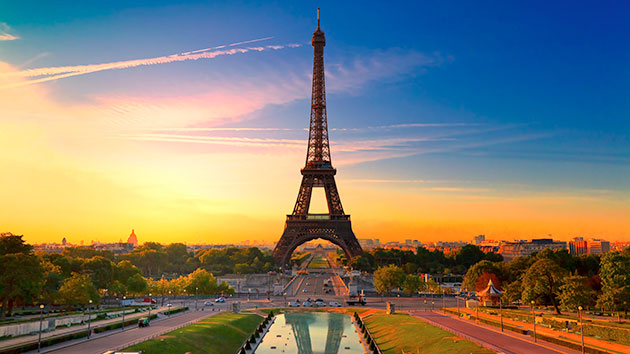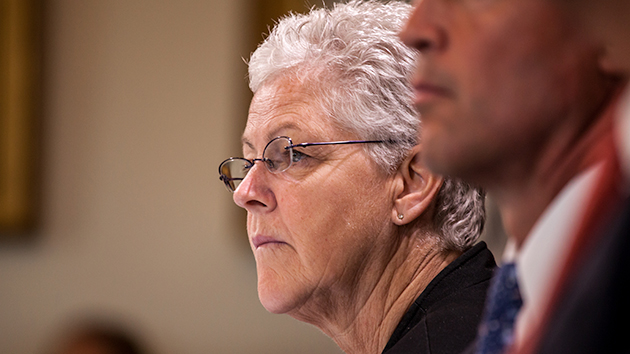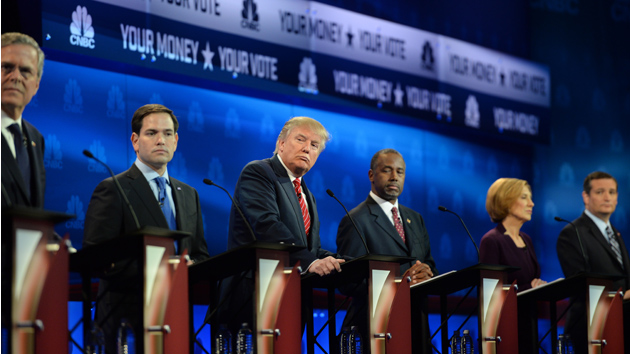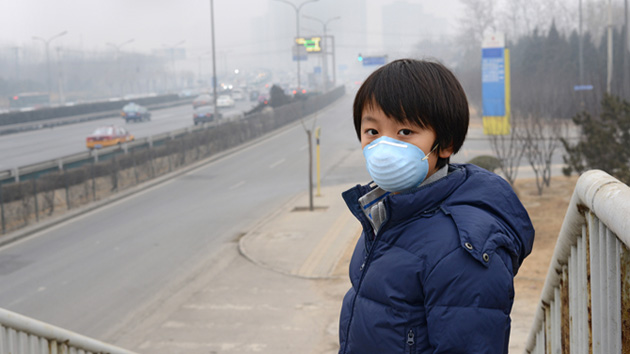
<a href="http://www.shutterstock.com/pic-77676271/stock-photo-sunrise-in-paris-with-the-eiffel-tower.html?src=8hvyA9T2T8UxJ3OedbyZMA-1-6">INTERPIXELS</a>/Shutterstock
On Monday, roughly 40,000 heads of state, diplomats, scientists, activists, policy experts, and journalists will descend on an airport in the northern Paris suburbs for the biggest meeting on climate change since at least 2009—or maybe ever. The summit is organized by the United Nations and is primarily aimed at producing an agreement that will serve as the world’s blueprint for reducing greenhouse gas emissions and adapting to the impacts of global warming. This is a major milestone in the climate change saga, and it has been in the works for years. Here’s what you need to know:
What’s going on at this summit, exactly? At the heart of the summit are the core negotiations, which are off-limits to the public and journalists. Like any high-stakes diplomatic summit, representatives of national governments will sit in a big room and parse through pages of text, word by word. The final document will actually be a jigsaw puzzle of two separate pieces. The most important part is the Intended Nationally Determined Contributions (INDCs). These are commitments made individually by each country about how they plan to reduce their carbon footprints. The United States, for example, has committed to cut its greenhouse gas emissions 26 to 28 percent below 2005 levels by 2025, mostly by going after carbon dioxide emissions from coal-fired power plants. Nearly every country on Earth has submitted an INDC, together covering about 95 percent of global greenhouse gas emissions. (You can explore them in detail here.) The video above, from Climate Desk partner Grist, has a good rundown of how this all really works.
The INDCs will be plugged in to a core agreement, the final text of which will be hammered out during the negotiations. It will likely include language about how wealthy nations should help pay for poor nations’ efforts to adapt to climate change; how countries should revise and strengthen their commitments over time; and how countries can critically evaluate each other’s commitments. While the INDCs are unlikely to be legally binding (that is, a country could change its commitment without international repercussions), certain elements of the core agreement may be binding. There’s some disagreement between the United States and Europe over what the exact legal status of this document will be. A formal treaty would need the approval of the Republican-controlled US Senate, which is almost certainly impossible. It’s more likely that President Barack Obama will sign off on the document as an “executive agreement,” which doesn’t need to go through Congress.
Meanwhile, outside the negotiating room, thousands of business leaders, state and local officials, activists, scientists, and others will carry out a dizzying array of side events, press conferences, workshops, etc. It’s basically going to be a giant party for the world’s climate nerds.
But what about the terrorist attacks in Paris? Of course, all of this will be happening while the French capital is still reeling from the bombings and shootings that left 129 dead on November 13. Shortly after the attacks, French officials affirmed that the summit would still happen. But it will be tightly controlled, with loads of additional security measures. As my colleague James West has reported, many of the major rallies and marches that activists had planned will be canceled at the behest of French authorities. So the festive aspects of the summit are likely to be toned way down, with attention focused just on the formal events needed to complete the agreement. The summit could also direct a lot of attention to the links between climate change, terrorism, and national security.
Is this actually going to stop climate change? Short answer, no. The latest estimate is that the INDCs on the table will limit global warming to about 2.7 degrees Celsius above pre-industrial levels. As I wrote in October, “That’s above the 2 degrees C (3.6 degrees F) limit scientists say is necessary to avert the worst impacts—but it’s also about 1 degree C less warming than would happen if the world continued on its present course.” No one expects that this summit will be the end of the battle to stop climate change. As technology improves and countries get more confident in their ability to curb greenhouses gases, they’ll be able to step up their action over time. That’s why it’s essential for the agreement to include a requirement for countries to do so. In any case, even if the whole world stopped burning all fossil fuels right now, warming from existing greenhouse gas emissions would continue for decades, so adaptation is also a crucial part of the agreement.
Some environmentalists have criticized that incremental approach as not urgent enough, given the scale of the problem. They could be right. But the fact is that right now, there’s no international agreement at all. The Paris talks will lay an essential groundwork for solving this problem over the next couple of decades. And there’s a pretty good chance the talks will be successful. At the last major climate summit, in 2009 in Copenhagen, negotiations crumbled because officials couldn’t agree on a set of global greenhouse gas limits that would hold most countries to the same standard despite differences in their resources and needs. That’s why, this time around, the approach is bottom-up: Because countries have already worked out their INDCs, there’s no ambiguity about what they’re willing to do and no need to agree on every detail.
Meanwhile, the mere existence of the talks has already spurred a wave of new investment in clean energy, new commitments from cities and states around the globe, and other actions that aren’t part of the core agreement. And the international peer pressure around the INDCs has already made it clear that simply ignoring climate change isn’t a realistic geopolitical option, even for countries like Russia or the oil-producing Gulf states. That’s a significant change from what would be happening in the absence of the talks. In other words, it’s safe to say that the Paris summit has already been somewhat successful, and now we have the opportunity to see how far that success can go.
So everything is peaches and cream? Not quite. There are some big remaining questions about how much money the United States and other wealthy countries will commit to help island nations, Southeast Asia, sub-Saharan Africa, and other places that are highly vulnerable to global warming. The international community is still far short of its goal of raising $100 billion annually by 2020 to fund adaptation. The legal status of the agreement remains unclear. We don’t know whether countries can agree on a long-term target date (say, 2100) to fully cease all greenhouse gas emissions. And it’s unclear how much tension there will be between juggernauts such as the United States, China, and the 43-country-strong negotiating bloc of highly vulnerable developing nations.
At Climate Desk, we’ll have an eye on all these questions, and more—both from the ground in Paris and from our newsrooms in the United States. So stay tuned.
This story has been revised.













